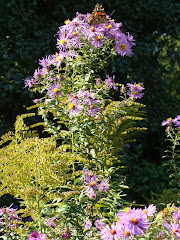Devastated by tornado, Kansas town rebuilds on green plan
by Olivia Blanco MullinsMon Apr 21, 12:46 AM ET
Devastated by a tornado, this tiny Kansas town is banking on a greener future as homeowners, businesses and officials weave environmentally-friendly features into their rebuilding plans.
It may seem an unlikely choice in this largely rural and conservative state where many municipalities don't even offer basic recycling services and environmentalism is often considered a new age or liberal trend.
But town leaders -- who are determined to become the first town in the United States to have all municipal projects built to the highest environmental and efficiency design standards -- say going green is the only way to save a town that was dying long before the tornado struck a year ago.
"Building green we come in contact with new industries to come and bring people back to Greensburg," said Thomas Corns, president of the Greensburg State Bank which is housed in a temporary building as a new, energy efficient bank is being built.
"If we were going to rebuild the same we would have the same community, the same problems."
Like many small towns, Greensburg had been waning for years before a massive tornado destroyed 95 percent of its homes and businesses on May 4, 2007.
Children went to college and never came back; there were no jobs, no entertainment.
Its biggest attractions were having the world's largest hand dug well and being the site of a meteorite crash.
Now, television crews and reporters are regularly drawn to the story of the town's environmental crusade, and many hope industries and job prospects will follow.
The town is building an eco lodging project, a recycling center and a water conservation system to turn rain into drinking water.
Residents have been encouraged to purchase energy efficient appliances and light bulbs; consider alternative energy sources like solar panels and windmills; use local, non-toxic and recycled building materials; and use native plants that don't require much watering to provide shade and reduce the load on storm sewers.
An Australian company even donated 200 water-saving toilets that are expected to save 2.6 million gallons (9.9 million litres) of water a year.
Some of the projects have confounded local residents who care more about getting life back to normal than saving the environment.
"I don't know and I don't care, just put a grocery store in town," said senior citizen Margaret Janct when asked what she thought of the plans.
Town leaders launched a non-profit group to teach residents how to improve efficiency and reduce their environmental impact in the old farmer spirit of doing more with less.
"The process for us was getting the community to understand what building green meant, and diffusing political issues of environmentalism," said Greensburg GreenTown director Daniel Wallach.
"We helped them see that they were environmentalists whether they knew it or not."
Wylan Fleener's furniture warehouse is surrounded by empty lots and the rubble left behind by the tornado.
The unfinished facade reveals Styrofoam-covered concrete blocks which will insulate the structure that he is planning to cover with old bricks that the tornado left behind.
Rebuilding on an energy-efficient plan has increased Fleener's costs by about 15 percent, but he figures he'll make up the difference in about five years.
He hopes to further cut energy consumption by installing solar panels or a wind turbine and is planning to rebuild his home with efficiency and sustainability in mind.
"This is more an older way of living than a green fad," he told AFP.
Farrell Allison is perhaps the town's greenest resident. He's rebuilding his home with a geothermal pump for heating and cooling, strategically placed windows and skylights to cut down on electrical lighting needs, and a buffalo grass lawn which needs less water.
"The efficiency of it is what I am really after," he told AFP. "I am an agronomist ... conserve the soil, conserve the water, that is just what I do."
Nearly a year after the tornado struck, some 800 of the town's 1,400 residents have come back to rebuild and more plan to return.
Greensburg has also succeeded in drawing back a number of young people who thought they had left home for good.
Stacy Barnes, 26, had been living in a larger city for years when the rebuilding process brought her back to take a job as the assistant to the city manager.
"I wanted to be here. It is town pride. I wanted to be part of this movement," she said.
"I want to walk down the street with my children and grandchildren and say 'I was part of that.'"
Copyright © 2008 Agence France Presse. All rights reserved. The information contained in the AFP News report may not be published, broadcast, rewritten or redistributed without the prior written authority of Agence France Presse.
Monday, May 12, 2008
Subscribe to:
Post Comments (Atom)















6 comments:
This is the way to go. We need to stop pitting business against the environment. It's often a false dichotomy. Hope there is success in this & other endeavors.
I agree. I liked the quote that said that this was actually a more old-fashioned way of doing things. I think that's true. People used to be frugal about energy usage how materials were used.
I LOVE THIS.
When Kansas towns are doing it, we know green is a movement :)
cindy and super b's mom-I love the good old prairie pragmatism these people are exhibiting. It's a hopeful thing, isn't it, that people will do the sensible thing in the long run.
That is great! I wish that philosophy would happen in that poor polluted town of Pitcher.
Post a Comment